 Copyright © Bustle & Sew Limited 2024
Copyright © Bustle & Sew Limited 2024
The right of Helen Grimes to be identified as the author of this work has been asserted in accordance with the Copyright, Designs and Patents Act 1988.
All rights reserved. No part of this publication may be reproduced, stored in a retrieval system or transmitted in any form, or by any means, without the prior written permission of the author, nor be otherwise circulated in any form of binding or cover other than that in which it is published and without a similar condition being imposed on the subsequent purchaser.
Every effort has been made to ensure that all the information in this book is accurate. However, due to differing conditions, tools and individual skills, the publisher cannot be responsible for any injuries, losses and other damages that may result from the use of the information in this book.
First published 2024 by:
Bustle & Sew
Station House
West Cranmore
Shepton Mallet
BA4 4QP
www.bustleandsew.com
2
A Bustle & Sew Publication



WelcometotheAprilMagazine
Hello everyone!
There’s something so cheerful and optimistic about this time of year. No matter how cold and grey it may still be outside, still there’s blossom, fresh green leaves, birdsong in the trees and the feeling that warmer days are just around the corner. The chickens are definitely enjoying the longer days and little Flora, one of our new girls has just laid her very first (very small) egg! (shown with the “big” girls’ eggs for comparison!)
Easter was last month of course, so we don’t have any eggs in this month’s magazine, but we do have lots of other goodies for you to enjoy. There’s a trip to the Kitchen Garden, a glimpse into the history of cross stitch (I would need thousands of pages I think to do real justice to this universally loved stitch). We also have some delicious new recipes to try and much more besides.
I do hope you’ll enjoy this issue and the May magazine will be published on Thursday 25 April.
Until then, very best wishes

3
Helen xx

4
April brings the bursting open of buds to reveal vivid green spring leaves. This greening of the countryside is one of the joys of living in a temperate part of the world where the seasons are so distinct. We are past the spring equinox now, and here in Britain the green flush of spring moves northwards up the length of the land at roughly a walking pace, from the Isles of Scilly in the south to Shetland in the far north.
A fine April morning is, for me, one of the best times of the year. Blossoms, fresh green foliage and exuberant birdsong are all so uplifting for the soul after the long dark days of winter. It’s harder to follow the progress of the seasons in town of course, but one way is to watch the progress of urban trees. Whether
April
they are native varieties like the oaks in Greenwich, London and other city
“OhtobeinEngland, NowthatApril’sthere, AndwhoeverwakesinEngland Sees,somemorning,unaware, Thatthelowestboughsandthe brushwoodsheaf Roundtheelm-treeboleandin tinyleaf, Whilethechaffinchsingson theorchardbough InEngland-now!”
parks, or long-established introductions like sycamore and lime, horse chestnut and London plane, all
deciduous trees are a window upon the changing seasons. Because of the heat generated within cities, the buds of these urban trees usually open earlier than those in the countryside.
April has just a handful of significant dates, including April Fools’ Day, the Easter Monday Bank Holiday (this year Easter itself falls in March) and May Eve, April 30. Old Lady Day, 6 April is now the start of the financial year; rents were due and the date therefore became a day of moving, or flitting. The first three days of April are “borrowing days” - that is, they are days supposedly borrowed by March and therefore have very bad weather.
The weather in April has always been important to the farmer…..
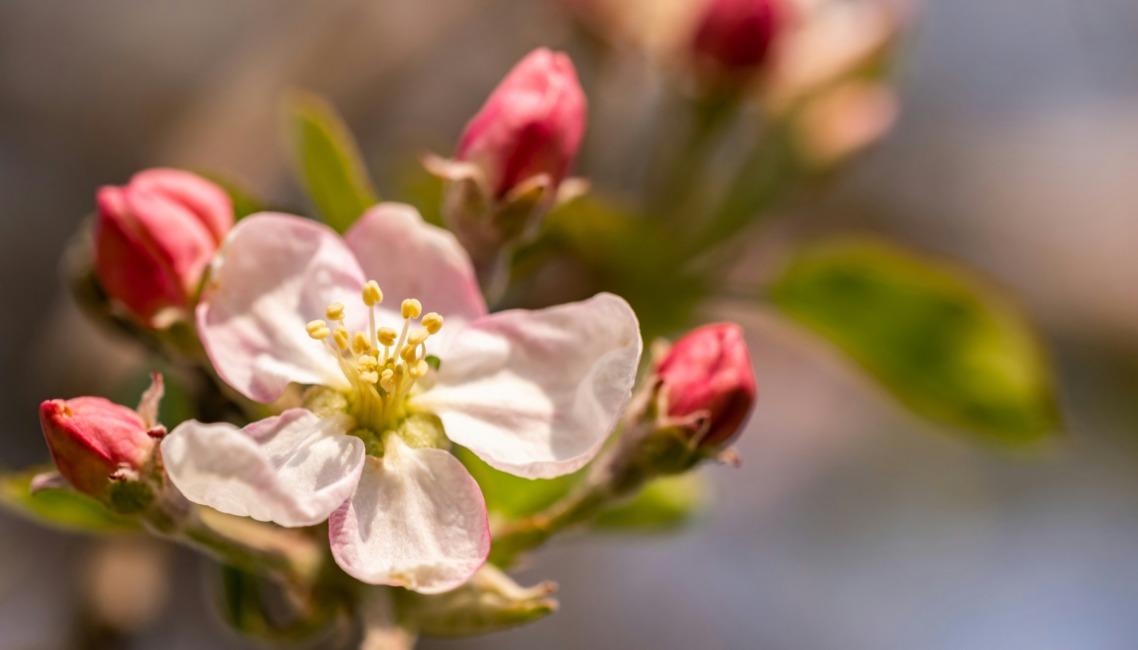
5

StitchingGuide
I chose to stitch my design on a pure linen fabric printed with small muted floral sprigs. I then selected floss colours that would work with the colours in these floral sprigs. I have given the floss colours I used below, but you may wish to change these to match your own fabric or simply to suit your own taste.
A Large daisy petals 3716 bullion stitch
Flower centre 744 small French knots
Small buds 3716 French knots
Stem 987 stem stitch
Leaf 987 satin stitch worked at an angle to the central vein.
B Stem 166 back stitch
Flower buds 598 detached chain stitch
C Flowers 744, 208, 211 detached chain stitch
Stem 987 back stitch
Leaf 987 satin stitch
D Stem 987 stem stitch
Leaf 987 satin stitch worked at an angle to the central vein.
E Stem 986 feather stitch
Blossoms 744 French knots
F Stem and leaves 987 stem stitch
Flower 4215 bullion knots
G Stem stitch 166
Text is worked in 601 satin stitch (wider areas), blending into stem stitch and back stitch in the narrower parts of the letters.

6
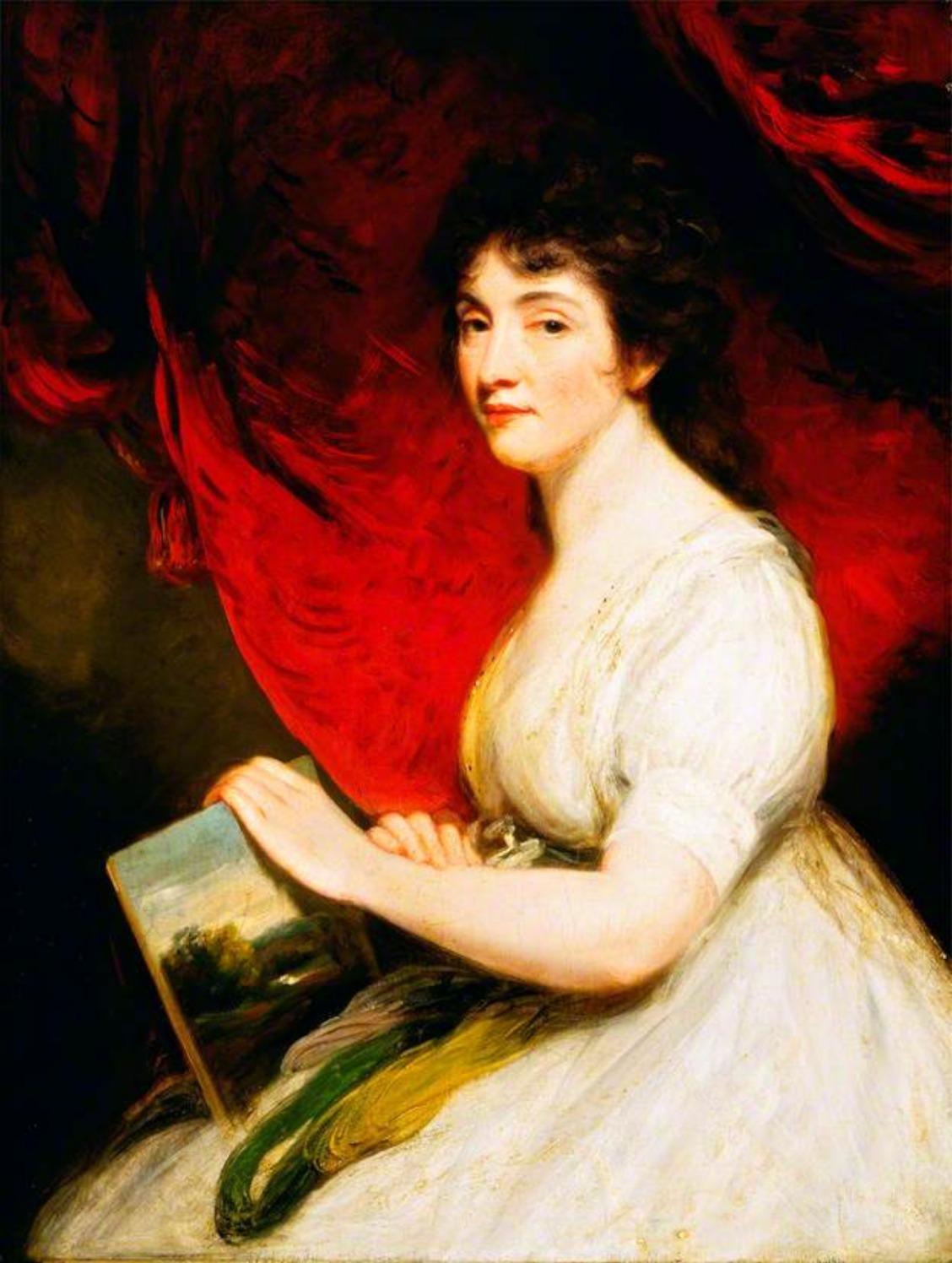
MaryLinwood ARegencyCelebrity
7

AprilFirst:Fishesand Fools
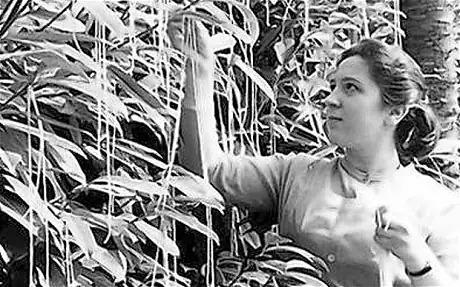
The tradition of April Fool’s Day goes back much further than this of course - so far in fact that its origins are unknown. A disputed association between 1 April and foolishness is in Geoffrey Chaucer's The Canterbury Tales. In the "Nun's Priest's Tale", a vain cock Chauntecleer is tricked by a fox on "Since March began thirty days and two," i.e. 32 days since the first day of March, which is of course the first of April.
Putting this somewhat dubious reference to one side, the complete absence of references to April Fool’s Day in plays and poems, and in the diaries and letters of people like Samuel Pepys, suggest that it was introduced to Britain some time in the late seventeenth century. It is likely to have come from France or Germany where the custom is known to have existed earlier. It caught on quickly though, and by the end of the eighteenth century it would seem that everyone was familiar with it, while by the middle of the nineteenth century, the following hoax was recorded in Robert Chambers’ Book of Days (1864)…
Tower Hill all that Sunday morning trying to discover the (non-existent) White Gate.
The popularity of April Fool’s Day has come and gone over the following centuries, but was certainly well observed in the mid-twentienth century as recorded in the diary of two women working in a wartime aircraft factory in Croydon…
This seems to have been a very successful prank as cabs crammed with prospective spectators turned up at
Apprentices and newcomers in all kinds of occupations were traditionally the victims of April Fool’s hoaxes and they could be sent to fetch items such as straight hooks, left handed screwdrivers, striped paint or other items relevant to their occupations. When the “fool” asked for each item the trick was to treat the request seriously, claim not to have it, and send the victim onto another experienced member of staff or “to hunt the gowk another mile” as the Scots put it.
8

9

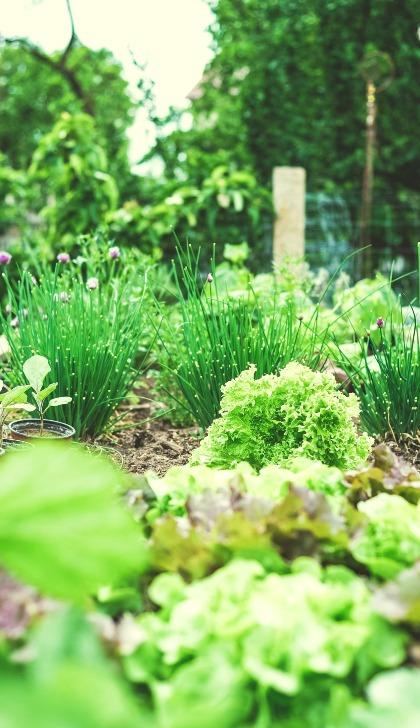
TheKitchenGarden
The herb garden in the present day is somewhat neglected, and yet the culture and curing of simples was formerly part of a lady’s education. There was not a lady in the kingdom but made her dilltea and diet-drink from herbs grown under her own eye. Thyme, sage, spearmint, and marjoram are all pretty, and a special quarter should be set aside for them in our gardens. This would probably recover, for our soups and salads, some of the neglected tarragons, French sorrel, purslain, chervil, dill, and clary, which are only found now in the pages of old herbals.
Laid out after a simple geometric design, the herb garden might be rather ornamental than otherwise. If a square piece of land be set aside for the herb garden, the beds might be separated by gravel walks with box or tile edgings.
Sweet herbs may be preserved for winter use by being cut when in full growth and dried in the sun. They may then be kept tied in bunches in a dry room or rubbed down, and bottled which is far better.
10
Scarlet runners may be planted at any time in April or May. The seed should be dropped about four inches apart, and if a line be selected along the two sides of a walk in the kitchen garden, a very pretty shady avenue may be made.
Plant stakes 7 or 8 feet high in the row where the beans are; set 2 or 3 stakes to the yard, and bend them over the top to form arches. In the spaces between the stakes, place pea sticks to which the runners may at first be trained. The stakes should also be tied together by wands arranged longitudinally, one along the top, and one halfway up each side. When this framework becomes covered with scarlet runners, a very pleasant shady walk will be formed.
With a little care in manuring and watering, the runners may be kept green and in bearing till killed by the autumn frosts. The runners will blossom and bear much more freely if the old beans are all removed and they are not allowed to ripen seed.
A mixture of the white Dutch runner with the scarlet runner gives to the avenue a very pretty effect.
Onwatering…
It is not accounted a wise proceeding to begin to water vegetables, for if you begin to do so you will have to continue it. Some vegetables too, will present a very bad appearance under intermittent watering, for example, onions, whose tube-like leaves will turn yellow at the top, if water is given to them and subsequently withheld.
Nevertheless, all transplanted vegetables must be watered plentifully, and even shaded if facilities exist for affording them shelter from the sun’s rays, in order to prevent too great a check to their growth.


A(very)LittleHistory ofCrossStitch
12
Cross-stitch is created using one of the simplest and most easily recognisable stitch techniques: two diagonal straight stitches crossing each other at right angles. One of the oldest styles of embroidery, it is still one of the world's most widely used.
Ancient wall paintings and sculptures show that embroidery was worked on clothing from the earliest times. Archaeologists have discovered well preserved linen fabrics worked with cross stitch embroidery in an Ancient Egyptian tomb believed to belong to a wealthy slave owner. It is known that cross stitch embroidery flourished during the Tang dynasty in China (618-906 AD), when it may well have spread westward along the trade routes.
In Spain, under the influence of the Islamic civilisation of the Moors (756-1492), blackwork was popular - this technique is thought to have influenced the development of cross stitch.
Blackwork featured geometric designs on white linen, using the wool from black sheep. This craft is believed to have been brought to England in the 16th century by Catherine of Aragon when she married Henry VII in 1509. Catherine was a keen stitcher and continued to make clothes for the king until her death in 1536.

In Eastern Europe at this time, folk art was flourishing, and cross stitch was used to embellish household items using geometric and floral patterns still found in pattern books to this day. But cross stitch really came into its own with the working of samplers.
The earliest printed pattern book was produced in Germany in 1524, but it was many years before pattern books became readily available. So stitchers would record samples of their favourite stitches and patterns on long strips of narrow cloth, hence the name "sampler". These weren’t intended to be displayed, but instead were references, rolled up and kept in a drawer until needed for reference. Often, an intricate stitch would be worked next to the stages used to compose the stitch to guide the inexperienced stitcher in making the stitch. These early samplers were often completely covered, with examples of stitches and patterns crammed together, showing the stitcher's need to make use of every square inch of her precious linen. Indeed, the word itself “sampler” is derived from the Latin 'exemplum', or the old French term 'essamplaire', meaning 'an example'.
In the sixteenth century, the popularity of embroidery in Europe was helped by the invention of printing. Cross stitch patterns were printed as black squares or dots, leaving the choice of colours to the embroiderer. The
stitcher could count the pattern onto the fabric or detach the pattern, prick holes through it and pounce the design through the holes using coloured powder.
English needlewoman Jane Bostocke created the earliest dated cross stitch sampler in 1598 that celebrates the birth of a child, Alice Lee, in 1596. The child was her cousin, and the artwork has a range of patterns and randomly placed motifs. This sampler (shown on following page) contains floral and animal motifs, samples of patterns and stitches, and an alphabet (the alphabet lacks the letters J, U and Z as was common at that time). There is evidence from the motifs that Jane had access to an early pattern book. The quality of the embroidery is very high, and Jane Bostocke may have been a member of the family's household employed for her needlework skills.
As pattern books became more readily available in Europe and America during the seventeenth century, the function of samplers changed. They evolved into educational instruments, stitched by children to teach them the needlework skills essential to young girls who would be making and marking household linen and clothing.
Blackwork sleeves with large free-stitched flowers filled with geometric patterns, under sheer linen oversleeves, and a counted blackwork forepart under her skirt. Portrait of Mary Cornwallis by George Gower, c. 1580.
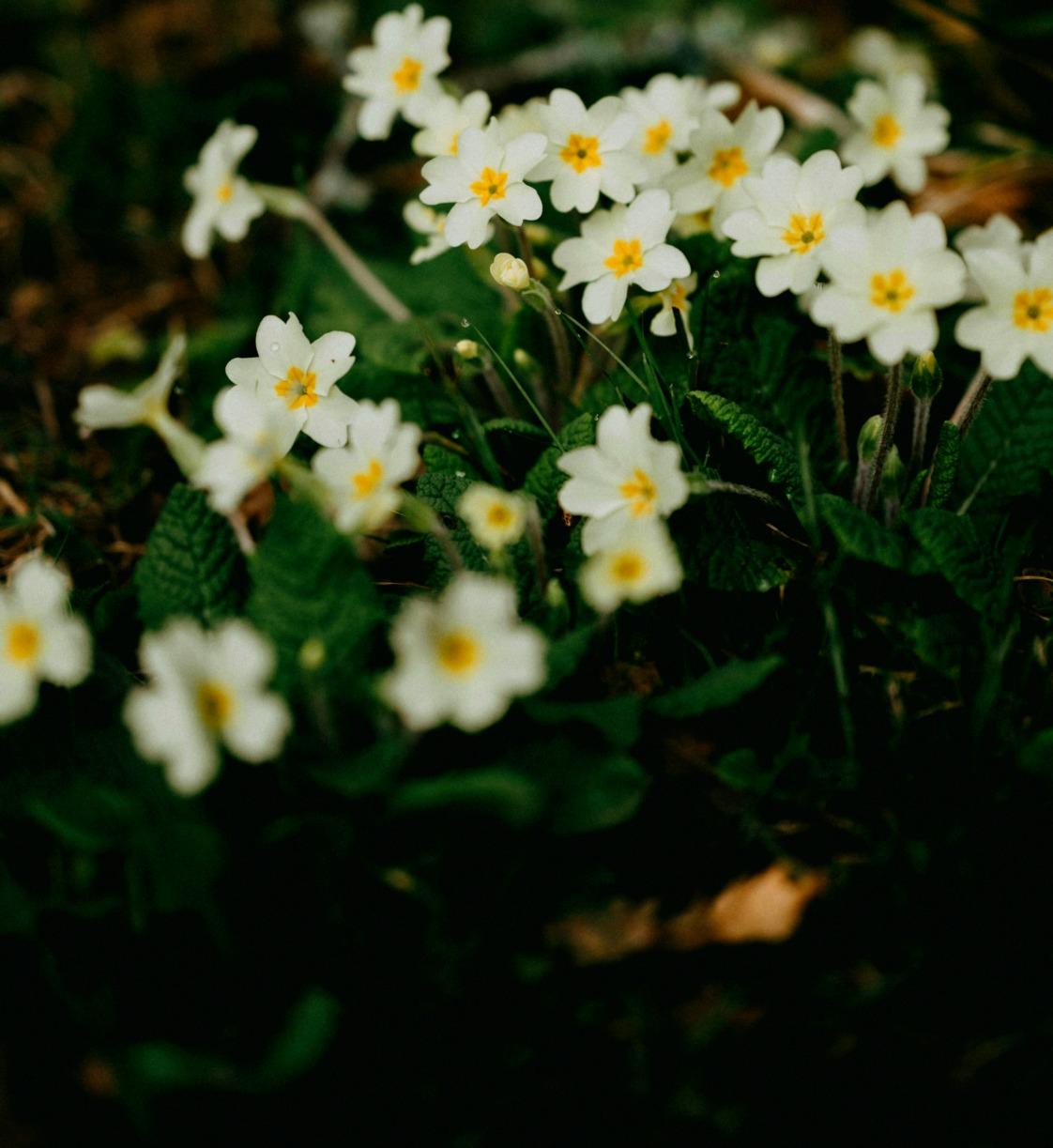
WelshBeauties….
TowardsthelastofApril,inMonmouthshire,theprimroseswereasbigas yourfist. IsayinMonmouthshire,becauseIbelievethatacertaingrassy mountainwhichIgavemyselfthepleasureofclimbing,andtowhichItook mywayacrossthecharmingcountry,throughlaneswherethehedgeswere percheduponbloomingbanks,laywithinthebordersofthisancient province….
Isaytheroadswereempty,buttheywerepeopledwiththebigprimrosesI justnowspokeof-primrosesthesizeofripeapplesandyet,inspiteoftheir rankgrowth,ofaspaleandtenderayellowasiftheirgoldhadbeendiluted withsilver. Itwasindeedamixtureofgoldandsilver,fortherewasawealth ofthewhitewood-anemoneaswell,andthesedelicateflowers,eachofso perfectacoinage,weretumbledalongthegreenwaysideasifaprincehad beenscatteringlargess.
 Henry James (1843-1916) from English Hours, 1870
Henry James (1843-1916) from English Hours, 1870
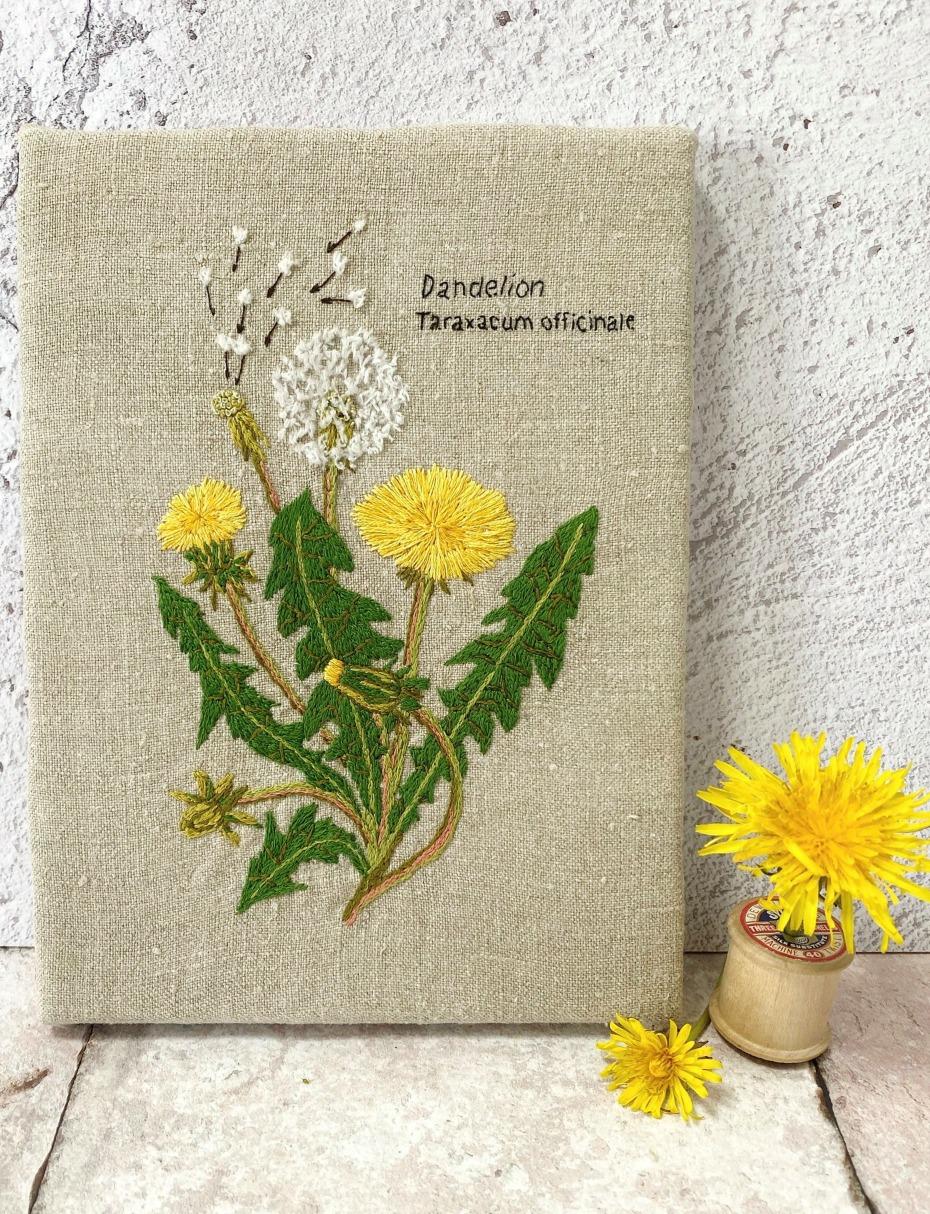
15
DandelionLeavesand WorcesterSauce
Thinslicesofnicelybutteredwhitebread,withjustaspeckofWorcestersauce spreadonthem,sprinkledthicklywithfinelychoppedyoungdandelionleaves,and coveredwithathinsliceofbrownbreadandbutter.

Recipe submitted by Mrs. Reginald Hindley, Cheshire, 1929
16

April: Amonthofshowers
…andrainbows
Inpurelyscientificterms,arainbowisformedwhenlightreflectsoffthebackofaraindrop twice,splittingvisiblewhitelightintothecoloursofthespectrumasweseeit.
Therearevariousmnemonicstohelpusremembertheorderofthecolours,mypersonal favouritebeingonethatincludesalittleEnglishhistory(theendoftheWarsoftheRosesin thefifteenthcentury)thatwastaughttomebymydad…“RichardOfYorkGaveBattleIn Vain”-Red,Orange,Yellow,Green,Blue,Indigo,Violet. Youwillonlyseearainbowwhen thesunisbehindyou,soifyou’reexperiencingatypicalAprildayofsunshineandshowers thenbesuretoturnyourbacktothesunwhenyou’rerainbowhunting.
Ifyou’resuper-luckythenyoumaysometimesspotadoublerainbow,formedwhen raindropsthatarehigherintheskyreflectvioletlightandthoselowerreflectredlightsothe orderisreversedwithindigoatthetopoftherainbowandredbeneath. Doublerainbowsare mostoftenseenwhenthesunislowinthesky,withaperfectcompletearcoccurringonlyat sunriseorsunset.
Butarainbowismuchmorethanthisofcourse -theBibletellsusit’sGod’spromisetoNoah thattherewillneveragainbeagreatfloodthatwilldrowntheearth,andevennowweknow thesciencethatgivesusrainbows,theystillseemwondrousandmagicaltousearth-bound humans.
17

18
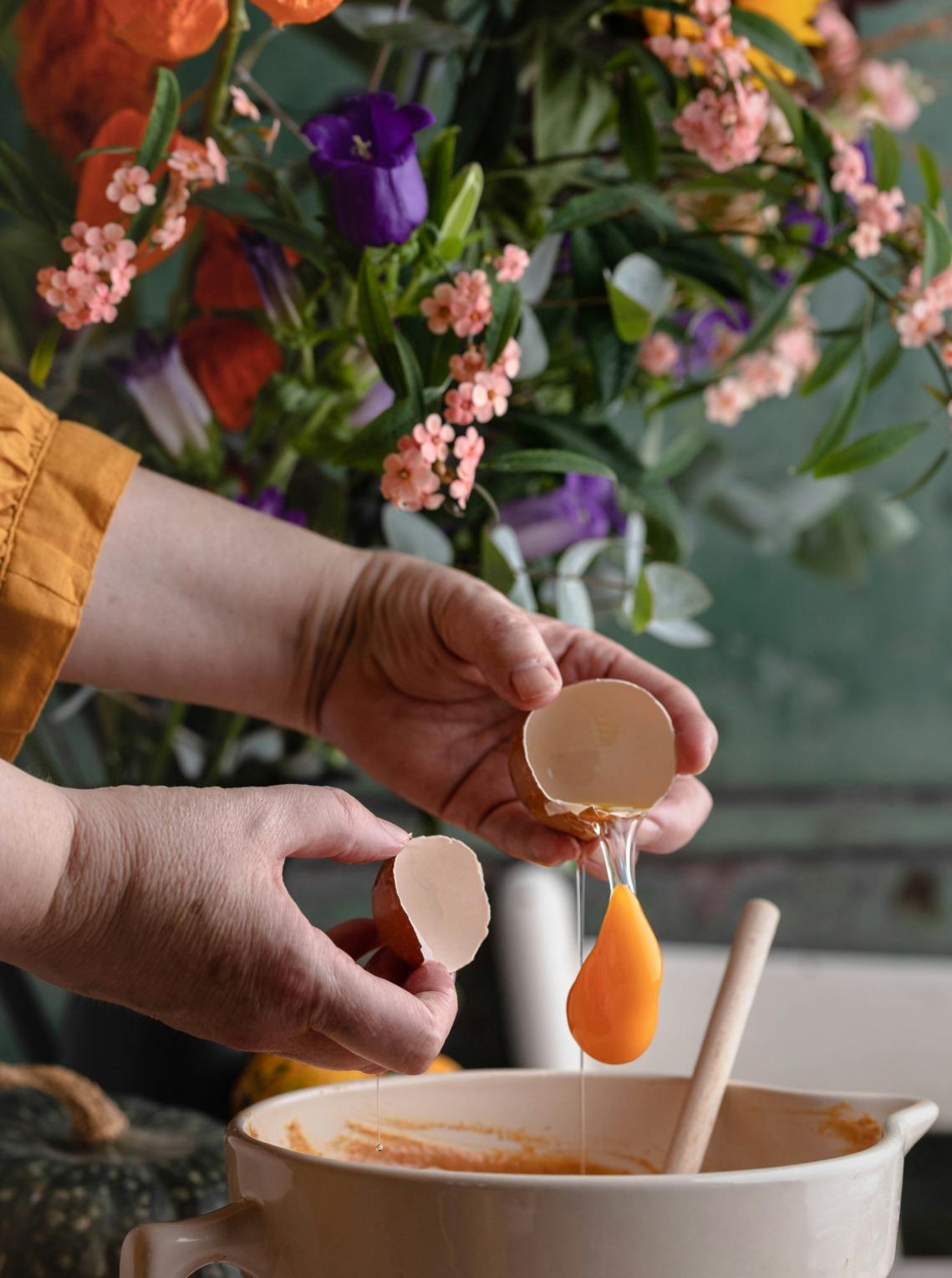
ATimeof Change….
19
April brings something of a turning point in the calendar. The countryside is changing colour all around us. New green shoots will emerge, unfurl, and become bright fresh young leaves before the month is over, whilst the first delicate white flowers of blackthorn will blossom in the hedgerows. By the end of this month entire landscapes will be coloured a vivid acid yellow as rapeseed plants come into flower. The weather is still rather mixed though, most likely a mix of those proverbial rather cold April showers and periods of warm sunshine. If we’re really unlucky we may even experience a “blackthorn winter” when the pure white petals disappear against a background of frost or even snow. This happens less often these days though as the climate warms.
April might be a time of growth, but it isn’t a particularly abundant time of year for home grown food. It’s known as the start of the “Hungry Gap” - the time when stores of winter root crops finally run out and the first new season vegetables won’t be ready to harvest until June. In the past people would have managed their food supplies very carefully around this time and would certainly have been looking forward to the more bountiful summer months. These days we’re unlikely to starve, but it’s still a treat when the first of the new season crops appear in markets and shops. There are still some seasonal treats to look forward to though. The first new potatoes will arrive in store and foragers will be looking out for morels and St George’s
mushrooms. Eggs a-plenty are back on the menu too as the chickens respond to the longer light-filled days, though in my own little flock I’m still waiting for the two young newbies, Betty and Flora, to lay their first eggs. Hopefully not too long now!
For meat eaters, lamb is really the only meat that retains a marked seasonal element. Most spring lamb is between four and six months old and the very earliest will usually become available in February and March - traditionally in time for Easter Sunday lunch. It’s a pale, extremely tender meat with a very subtle flavour best cooked very simply. Later this month the short British asparagus season gets underway, officially running for just eight weeks from St George’s Day to the summer solstice. In common with most sweet vegetables, as soon as the spears are picked, the sugar in them begins to turn to starch so for the best experience they should be eaten very fresh (this is a good reason not to buy imports flown in from abroad). Picking asparagus is back-breaking work and, since a stem can grow by as much as four inches in a day, new spears pop up overnight and the same fields will be picked over several times before the end of the harvest. When buying asparagus look for bright green, fresh stalks. They will need no more than a quick rinse and a few minutes’ cooking time and once cooked should still be firm to bite.
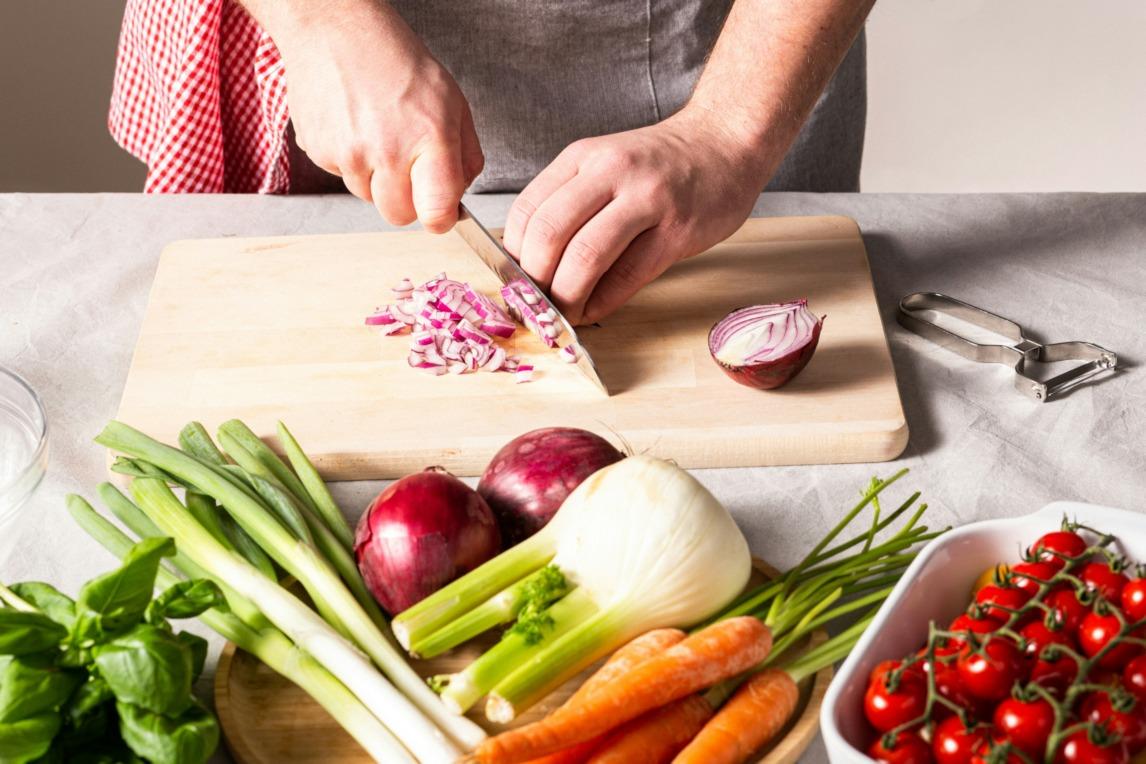
Pea,MintandSpring OnionSoup
Ingredients
● 1 tbsp olive oil
● knob of butter
● ½ bunch spring onion, sliced, plus a few extra to serve
● 1 potato, cut into small dice
● 1l hot vegetable stock
● 900g frozen petits pois
● ½ small bunch mint, leaves picked, plus a few extra to serve
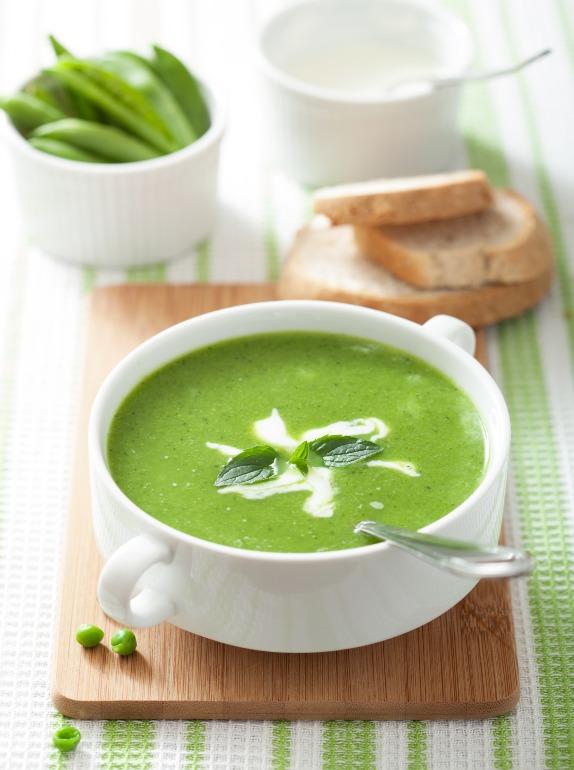
Method
● Heat the olive oil and butter in a heavy based pan. When foaming, add the spring onions and potato. Gently fry without colouring for about 5 mins. Stir in the stock, bring to the boil and simmer for 10 mins or until the potato is tender.
● Stir in the peas, bring to the boil again, then cook for about 3 mins until they are just done. Remove the pan from the heat, add the mint leaves and whizz in a blender or food processor until smooth.
● To serve, heat the soup and divide between 6 bowls. Scatter with mint and sliced spring onions, if you like.

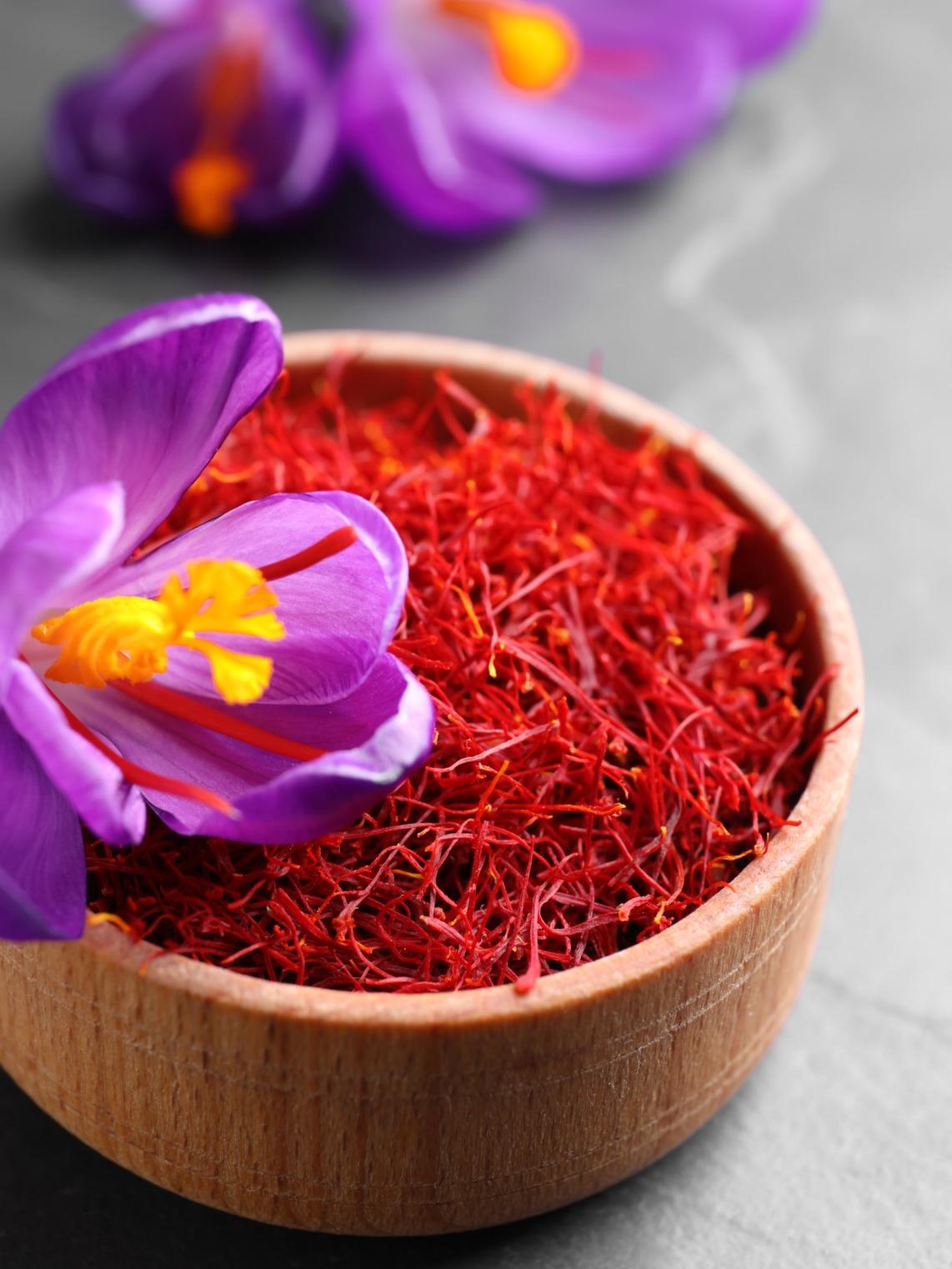
Whatispurpleintheearth,redin themarketandyellowonthetable?
Atthistimeofyearourgardensarefullofcolourfulspringbulbs,includingofcoursethe crocuswhichcomesinavarietyofshadesofpurple,yellowandwhite.Butyou’reunlikelyto discovertheveryspecialSaffroncrocusgrowinginyourborders…..
Saffron crocuses are grown in many locations from Spain to Iran, France and Morocco, as well as in New Zealand, Tasmania and the United Kingdom. But if you are seeking crocus fields, then don't look for fields of gold - in fact the yellow spice comes from the centre of a beautiful purple flower.
There is something magical about the saffron crocus . The flower appears overnight, blooms for less than one day, then disappears by the evening. If it is not harvested by noon on the day of flowering the spice loses its potency, but it is such a delicate and painstaking process that nothing can be rushed. The purple petals are of no value at all, it is the red stigmas that are the source of the spice. Even today the stigmas have to be removed by hand from the flowers - a machine has yet to be invented that can undertake this task.
In the 16th and early 17th centuries saffron was widely grown in Essex in the south east of England and the town of Chipping Walden changed its name officially to Saffron Walden, as growing and selling the spice had made the town one of the richest in the country. But the town's prosperity waxed and waned over the years - in 1540 demand plummeted as European wars meant that imported saffron was cheaper, whilst a hundred years later the price of saffron soared to more than four pounds a pound (from just over two pounds a few years earlier) as the belief grew that saffron was an excellent remedy for the plague. Sadly though, in spite of some good years, the fortunes of the town, and the spice, declined until by 1720
Ingredients
● 350 g butter
● 900 g plain flour
● 450 g currants
● 75 g chopped mixed peel
● Pinch grated nutmeg
● 20 g fresh yeast or 1 dried yeast sachet
● 100 g caster sugar
● 300 ml lukewarm milk
● Pinch saffron
when King George I made a formal visit to the area there was no home-grown saffron from the town to present to him. This decline was never reversed and by 1790 there was no saffron being grown in Saffron Walden or anywhere else. The saffron crocus had almost completely disappeared from England.
The taste of saffron has been described as being slightly bitter while also lending a semi-sweet taste to the dishes to which it is added. It’s really difficult pin down the flavour of saffron, since its complexity is experienced by everyone a little differently. Some say it has a faint honey flavour, whilst to others it tastes of the sea.
Today Iran is by far the most important producer of saffron harvesting over 90% of the global supply. . Some of the statistics are mind-boggling - did you know that you need 170,000 flowers to make just one kilo (2.2 lbs) of saffron? This means that Iran's annual production of over 200 tonnes involves around thirty eight billion flowers. I can't even imagine what 38 billion flowers would look likethough perhaps it's easier if you think that laid petal to petal they would wrap around the earth thirty times!!
Although ounce for ounce saffron is the most expensive spice in the world, it isn't actually too expensive to use due to its potency and so I thought you might enjoy my traditional English recipe for Saffron Buns below - a popular alternative to hot cross buns in our family each Easter.
Method
● Pre heat your oven to 200C, 400F gas mark 6.
● Mix the yeast with the sugar and stir into the milk. Leave for 20 mins or so until it begins to froth.
● Rub the butter into the flour then stir in the currants, mixed peel and nutmeg (adjust amount to suit your own taste). makes about 20
● Make a hollow in the centre of the flour mixture, pour in the yeast and milk and add enough saffron to give a good colour.
● Mix to a soft dough, adding a little more milk if the mixture seems a bit stiff.
● Turn onto a floured board and knead well.
● Return the dough to the bowl, cover with a damp cloth or with cling film and leaf in a warm place to prove until it has doubled in size.
● Turn out and knead again until smooth.
● Shape the mixture into small buns.
● Place on a greased baking sheet.
● Let the buns stand in a warm place for a further 15 minutes proving time then bake for 15 to 20 minutes.
● Glaze with a mixture of sugar and hot milk immediately you remove them from the oven and then cool on a wire rack

24
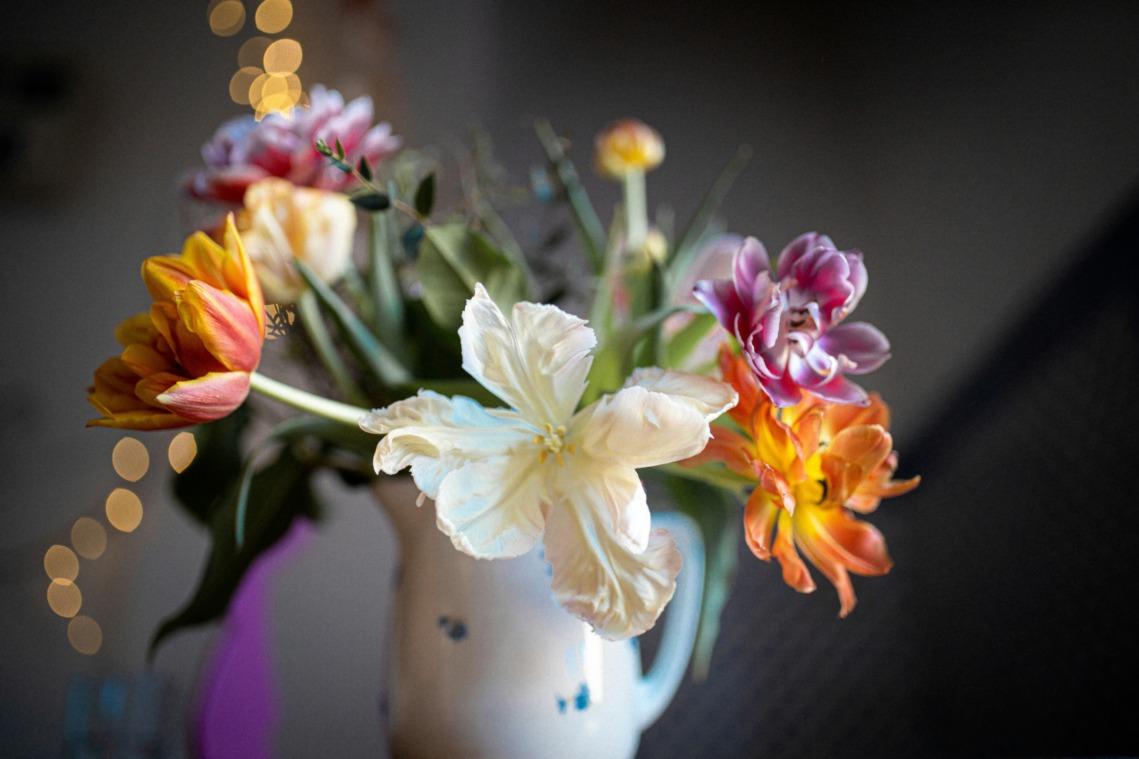
HomeComforts
Allsortsofspring-floweringshrubsandflowersandbeencouragedinto bloombybringingthestemsandbranchesintoawarmroomandstanding theminavaseofwater.
Tulipscanbehelpedtoremainuprightbyplacingacoppercoininthe wateratthebottomofthevase.(didyouknowthattheyareoneofthe fewflowersthatactuallycontinuegrowingoncecut?) Appletwigs, forsythiaandfloweringcurrentwillmakeacheerfulspringflower arrangementwhileabranchofwinter-sweet( withits strange,tasselledflowerswillperfumeawholeroom.
Chooseflowersthataren’tyetopenandheavilybuddedsubstantialstems forthebestresults.
25
SpringSowing
Butforthissummer’squickdelight
Sowmarigold,andsowthebright Frailpoppythatwithnoondaydies
Butwakenstoafreshsurprise;
Alongthepathwaystonesbeset
SweetAlyssonandmignonette,
Thatwhenthefullmidsummer’scome
Onscentedclumpsthebeesmayhum, GoldenItalians,andthewild Blackhumble-beealikebeguiled: Andloverswhohaveneverkissed MaysowthecloudyLove-in-Mist.
Norbethelittlespaceforgot
Forherbstospicethekitchenpot:
Mint,pennyroyal,bergamot, Tarragonandmelilot, Dillforwitchcraft,prisoners’rue, Coriander,costmary,

Tansy,thyme,SweetCicely, Saffron,balmandrosemary
ThatsincetheVirginthrewhercloak Acrossit-sosaycottagefolkHaschangeditsflowersfromwhiteto blue.
Buthaveacarethatseedsbestrewn
Onenightbeneathawaxingmoon, Andpickwhenthemoonisonthe wane,
Elseshallyourtoilbeallinvain.
26

TheRoyalSchoolofNeedleworkwasfoundedin1872witha missiontopreservetheartofhandembroidery.
Tomarkits150thanniversarytheRSNlaunchedtheRSN StitchBanktocontinuethismission.
TheRSNStitchBankaimstodigitallyconserveandshowcase thewidevarietyoftheworld’sembroiderystitchesandthe waysinwhichtheyhavebeenusedindifferentculturesand times.
TheRSNStitchBankisanongoingprojectandnewstitches areaddedregularly.TheRSNwillbeworkingwithpartners aroundtheworldtoincludestitchesfromdifferenttraditions.
Everyyearwelosehistorictextilesthroughwear,age,andthemoreaggressiveroutesofwar,neglectand destruction.
Weknowthatstitchesfromhistoryhavebeenlostbecausetheyfalloutofuse.Then,whenanolder embroideredpieceisdiscovered,curatorsandmuseumstaffcannotrecognisethestitches.Textilesandthe knowledgeofstitchesthroughouttheworldcontinuetobethreatenedbywarsandotherdisturbances,aswell aschangesinmanufacturingprocesses.
StitcherscanusetheRSNStitchBanktofindanewstitchtouseinaprojectandlearnhowtomakeitusing videos,writteninstructions,illustrationsandphotographsforeachstitch.Researchers,curators,historians andstudentscanusethesitetolearnabouttheuse,structureandhistoryofeachstitchinarangeof embroiderytechniquesandtoidentifyastitchonatextile.
Youcanbrowsethestitchwallhere
Youcanalsocreateyourownfolderandsavethestitchesyouaremostinterestedin. Itisallcompletelyfree andanamazingresourceforstitchers!

27

28

Templates
 Copyright © Bustle & Sew Limited 2024
Copyright © Bustle & Sew Limited 2024



















 Henry James (1843-1916) from English Hours, 1870
Henry James (1843-1916) from English Hours, 1870















